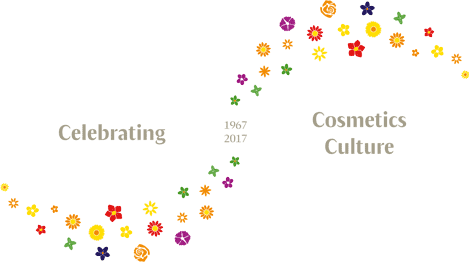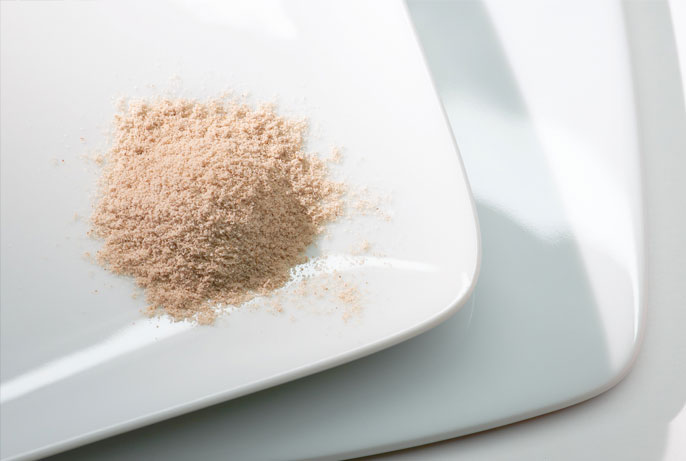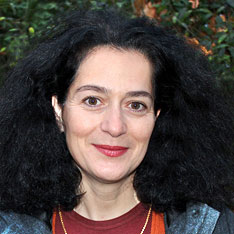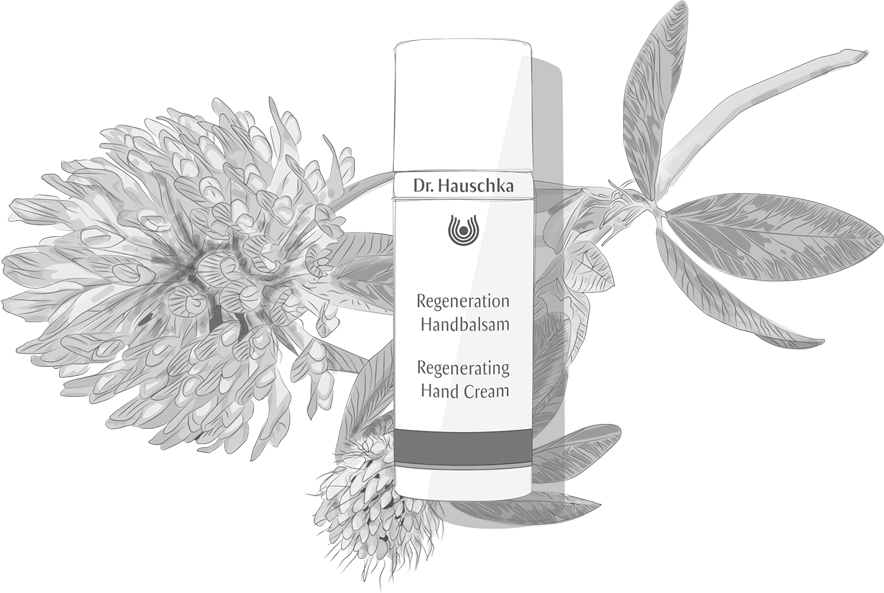Production and research
Would you describe your face cream as a piece of art? When it comes to Dr. Hauschka Skin Care products, we believe this is a justifiable statement. And would you attribute a personality to a plant? We do and closely study its biography when developing and producing new skin care products. We examine your skin’s needs, then look for the medicinal plants, waxes and oils that best help you meet them. We combine the ingredients in such a way that they are in harmony with one another and your skin. This is the only way to create a product with a successful, artistic composition.

Our aim is to create effective product formulations. As such, we take great effort to constantly optimise the ways in which our plants and other raw materials are used in Dr. Hauschka Skin Care products. Fortunately, we already have a huge wealth of information: the knowledge and experience that we have gained through the development and production of WALA Medicines since 1935. Elisabeth Sigmund added to this knowledge base. In the 1930s, she started to study centuries-old medical books in monastic libraries. Elisabeth discovered forgotten medicinal plants and minerals with benefits for the skin, which she used to develop the formulations for Dr. Hauschka Skin Care. Today, we are able to combine the knowledge from days gone by with modern methods.
Throughout the years we have become specialists in the research of plant based raw materials and, in spring 2017, we moved into a new laboratory building to continue this work. There, we optimise development methods and look at highly practical research questions posed by our colleagues. For example, our gardeners often request information on ingredients to determine when these are most nutrient rich and ready to be harvested; or our raw materials warehouse would like to know how to create the best conditions for storing the essential oils. Our Development team also works in close cooperation with external specialists as well as universities and uses publications to share their knowledge.

Lastly, we conduct quality control in our new laboratory building. Not only the finished products are tested to ensure that they are safe and of highest quality possible but also the raw materials we use for our skin care and make-up undergo quality tests.
Authorities nowadays demand that skin care and make-up manufacturers conduct extremely extensive analyses to proof the safety of products. However, our tests go above and beyond the required scope. We combine the knowledge that we have gained over several decades with the findings presented in the latest scientific literature and use the results to conduct additional analyses. Ultimately, this supplemented knowledge enables us to compose the best possible skin care and make-up products for you.
Interview

with Herwig Judex, member of the WALA Foundation, and Professor Florian Stintzing, Head of Science at WALA Heilmittel GmbH, the company behind the brand Dr. Hauschka Skin Care About the research, development and production of Dr. Hauschka Skin Care and Make-up.
Mr Judex, you’ve been with WALA since 1971. At the time, Dr. Hauschka Skin Care had only been on the market for four years – as a second brand that complemented WALA Medicines. Did the knowledge of the production of medicines influence the formulations for the skin care products?
Herwig Judex: The formulations for Dr. Hauschka Skin Care products were developed in cooperation with doctors, estheticians and pharmacists. The experience from the production of medicines naturally played a major role during the development. There were also three key values: helping, caring and healing. Our skin care products needed to be all of these things. This explains why they were originally called ‘Healing Cosmetics’,a name that has since been changed for legal reasons. Despite this, helping, caring and healing is a package and remained the concept under which the products were originally created.
Mr Stintzing, you are in charge of WALA’s science department. Is the concept of ‘helping, caring and healing’ still important to you today when developing Dr. Hauschka Skin Care products?
Florian Stintzing: Yes, there is still a healing stimulus behind the products as Mr Judex says. There is also the question of how we can help our customers. We don’t follow the latest trends, but instead look at what people actually need. A person suffering from atopic dermatitis needs support and products that care for the skin, men and women ask for skin care for their face and body, and people who wear make-up also have their own special requirements. As a natural skin care and make-up manufacturer, we want to develop formulations that really focus on the individuals and enable them to feel happy in their own skin each and every day. As such, we don’t have any short-lived skin care, instead our products address basic needs.
How have development and production of Dr. Hauschka Skin Care products changed over the years?
Judex: It has changed in many ways. In the 1960s and 70s, we created products based on our experience-based knowledge. The idea was the most decisive factor. We mixed things together and tested whether the product could do what it was intended to. If so, it was produced without any further requirements. If we wanted to assess the quality of a plant from our medicinal herb garden, we looked at its growth. If we added too much fertiliser and a plant that would usually only be 30 centimetres tall actually grew to a metre, it could not be used in production. We had the belief and inner certainty that the things which we had carefully considered and thought out were right. And it was right. Nowadays, that’s no longer how things work, of course. We have to conduct stability and application tests and provide far more detailed information about the substances. This is now a legal requirement for skin care and make-up manufacturers in Germany and it is important because the people nowadays demand reassurance of safety.































